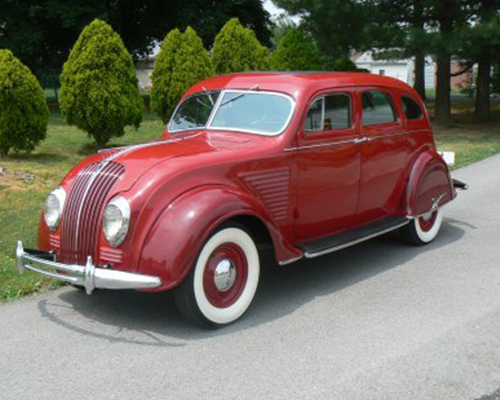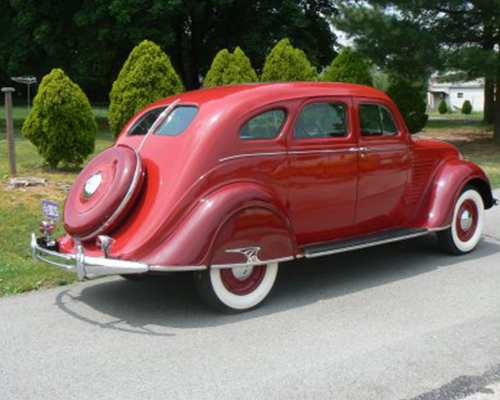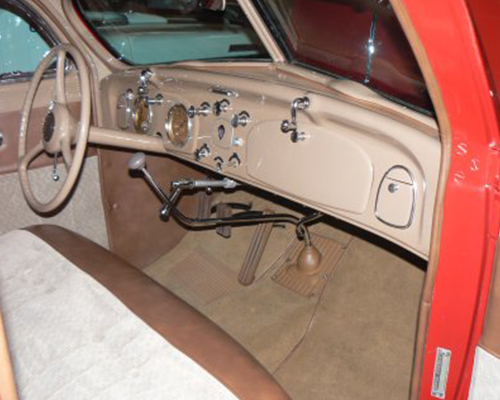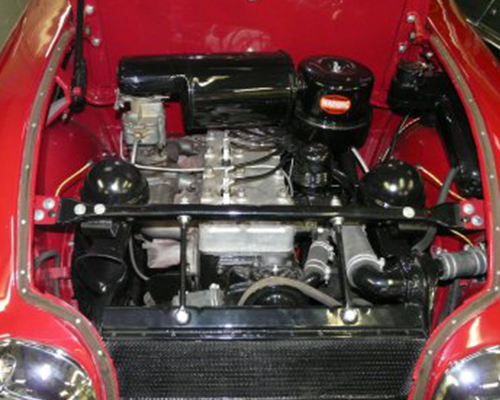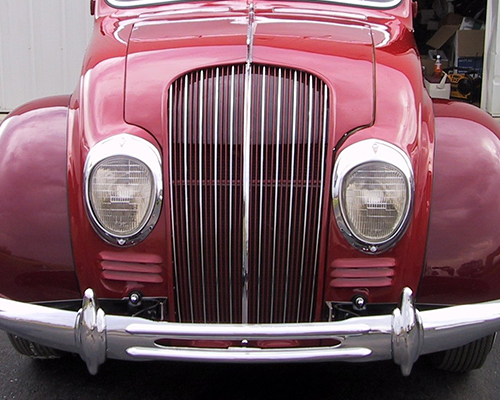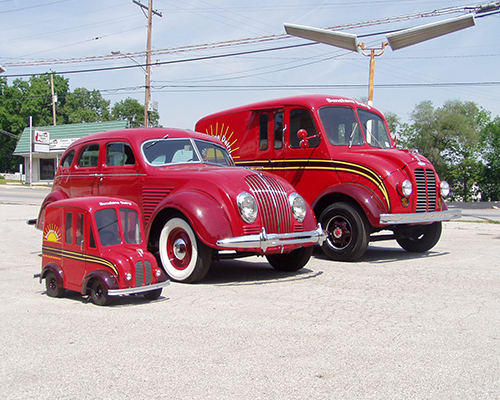1934 Airflow From MOPAR News Web Site
I never saw a Chrysler and/or DeSoto Airflow car in person until I saw this car. I saw pictures of them and read articles about them. They have been in articles written for the Lincoln Zephyr Newsletter. They have been compared to the Lincolns as the futuristic designed cars along with the high-speed trains of the 1930s & 1940s as well as the aerodynamic designs of the airplane industry.
The reason I had interest in the car was because of the aerodynamic styling that looks a lot like the front end of a Divco delivery truck. Both vehicles were designed and tested in the wind tunnel owned by Wilbur Wright. This test showed that the 1930 DeSoto was more aerodynamic if the body was turned around on the chassis and ran backwards. To achieve the best mileage and horsepower, the engineers came up with this design. The 1934 DeSoto and Chrysler Airflow cars had 25 major changes that included the looks, ride, power and driving. This included the first rear seat that was mounted forward of the rear axle instead of sitting over the rear axle. There was a new innovation that allowed the driver to shift the transmission without using the clutch. It ended up that the public wasn’t ready for all this in one drastic model year. By the end of 1937, the Airflow design was gone in the Chrysler and 1936 in the DeSoto. But it serves my purpose to show how much alike the Divco and the Airflow Car Grilles, headlights, windshields and roof lines looked so much alike.
Throughout this time, the Chrysler/DeSoto engineers (sometime called the Three Musketeers. . . Carl Breer, Fred Zeder and Owen Skelton, brought over from Maxwell by Walter P himself!) were convinced that there was something wrong with the contemporary car designs. The high grills, squared-off lines, and long fenders and hoods were limiting economy and top speeds. The Chrysler engineers even pioneered wind tunnel testing of automobiles, with none other than Orville Wright (of the Wright Brother’s fame) manning the controls. Their conclusion was that cars of the time were ‘backwards’!
In 1933 the engineers modified a DeSoto sedan to drive backwards. Aimed with back to the wind, this oddball experimental DeSoto provided better gas mileage and higher cruising speeds! Armed with the results of this testing, the styling department went to work.
The ongoing experimentation indicated that a teardrop shape would be the most aerodynamic. It was applied to the 1934 DeSoto, Chrysler and Chrysler Imperial Airflow automobiles. The resulting vehicles were an aerodynamic success, but the motoring press was less than enthusiastic, with many writers extolling the virtues of the engineering, but panning the ‘odd’ appearance.
Walter P. Chrysler bred a feeling of ‘engineering as king’ into the company right from its inception. The Airflow Models for Chrysler, DeSoto and Imperial were certainly not a designer’s car. They were engineer’s cars. According to Mr. Chrysler himself, a vehicle with this many improvements needed to be on the street. . . right away! Disregarding his styling heads, he ordered the cars to be rushed into production. The look was simply far too advanced for regular production models. Add to that the poor production quality, the delays brought about by the rushed introduction, and General Motors underhanded advertising and rumor-mongering, and the cars were doomed to failure.
Most of the potential buyers shunned the radical new looks, and never got to experience the improvements. . . many of which we take for granted today. The new cars had great weight distribution, making them extremely stable, the passenger compartment was located in front of the rear wheels, which offered more room and superior comfort, and these were also the first cars with unibody construction, simplifying production and increasing body strength tremendously. The recessed headlights, triple-bar bumpers, rear fender skirts and sloping V-type windshield were just too much for the motoring public of the 30’s to accept.
These cars truly were thirty years ahead of their time. The DeSoto Airflow sedan could safely have been considered the world’s first mini-van, fifty years before the first Dodge Caravan rolled off the line! Airflow cars even came equipped with automatic overdrive transmissions!
Unfortunately, the Airflow signaled the end for Walter P. Chrysler himself. After two dismal years of sales, he turned the corporate reins over to K.T. Keller, himself an engineer and long-time protégé of Chrysler. Keller immediately began work on bringing styling up front, but including as many of Chrysler’s improvements as could be. The Airflow’s commercial failure forced Chrysler into a conservative styling direction that it wouldn’t break out of until the Virgil Exner era of the late 50’s and 60’s.
The DeSoto Airflow was dropped after the 1936 model year; the Chrysler version held out until 1937. The total production of the AirFlow cars was as follows:
Airflow production from 1934 to 1937
| DeSoto Chrysler |
13,940 11,262 |
6,797 8,000 |
5,000 6,285 |
25,737 25,547 |
xxxx 4,600 |
25,737 30,147 |
A comparison between the Desoto (left) and the DIVCO truck (right)
My interest in collecting such a car was the design of the Airflow and that of the new Divco Truck design of the 1940’s were almost the same and that both of them were tested in a wind tunnel for maximum economy which was the least wind resistance.

